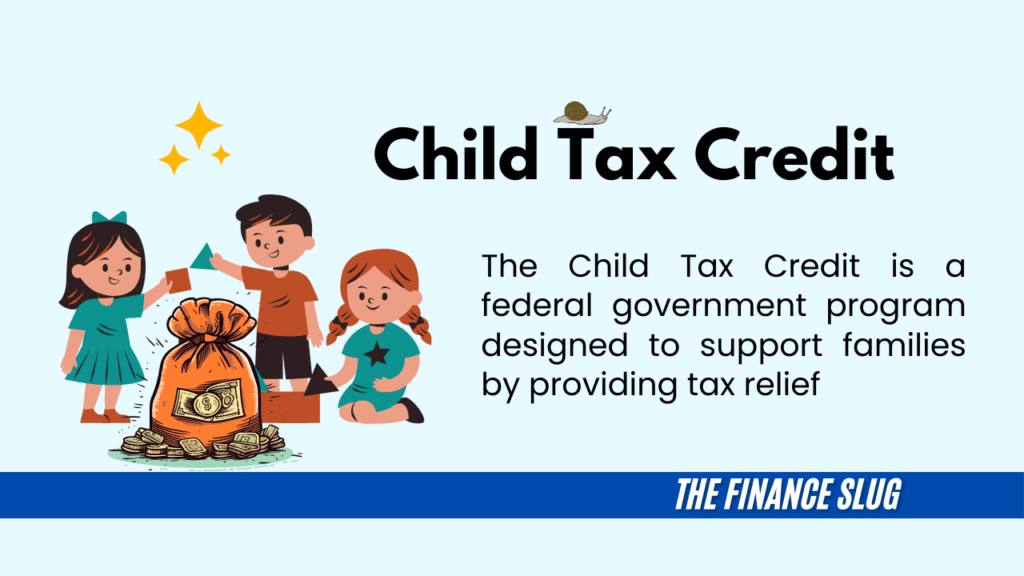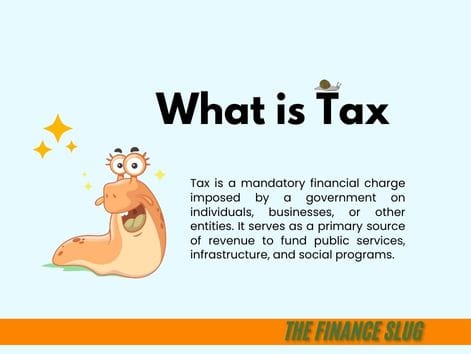
Raising children is rewarding but can also be expensive. The Child Tax Credit (CTC) is a vital financial tool designed to ease the cost of raising children by reducing the amount of federal income tax you owe. Whether you’re a parent or guardian, understanding how the Child Tax Credit works and how to claim it can save you money and provide significant financial support for your family.
Let’s explore the basics, step-by-step, and uncover the full potential of this tax benefit.
What Is the Child Tax Credit?
The Child Tax Credit is a federal government program designed to support families by providing tax relief. Essentially, it allows parents or guardians to reduce their tax bill or receive a refund based on the number of eligible children in their care.
For example, if you qualify for a $2,000 Child Tax Credit and owe $1,000 in taxes, the credit will cancel out your tax bill entirely, and you might even receive a refund for the remaining $1,000.
The credit applies to children under 17 and is designed to help families manage essential expenses like food, clothing, childcare, and education.
Why Is the Child Tax Credit Important?
The cost of raising children continues to rise, with parents often spending thousands of dollars annually on basic needs, education, and healthcare. The Child Tax Credit provides essential financial relief, helping families meet these expenses without compromising on other priorities.
For example:
- A family with three eligible children can reduce their federal tax bill by up to $4,000.
- Low-income families can still benefit from refundable credits, ensuring they get financial assistance even if they don’t owe taxes.
This credit isn’t just for tax savings—it’s a way to improve your family’s financial health.
How Does the Child Tax Credit Work?
The Child Tax Credit directly reduces the amount of taxes you owe. If the credit is more than your tax liability, you may qualify for a refund through the Additional Child Tax Credit (ACTC).
Here’s how it works:
- Base Credit Amount:
For each qualifying child under 17, you can claim up to $2,000 in credit. - Refundable Portion:
Up to $1,500 of the credit is refundable. This means even if you owe no taxes, you could receive up to $1,500 per child as a refund. - Income Limits:
The credit begins to phase out for higher-income families:- Single filers: Phase-out starts at $200,000.
- Joint filers: Phase-out starts at $400,000.
For example, if you earn $210,000 as a single filer, your Child Tax Credit will reduce slightly due to the phase-out rule.
Who Qualifies for the Child Tax Credit?
To claim the Child Tax Credit, you and your child must meet specific criteria:
- Age Requirement: The child must be under 17 at the end of the tax year.
- Relationship: The child must be your biological child, stepchild, foster child, sibling, or a descendant of these (e.g., grandchild).
- Residency: The child must have lived with you for more than half of the year.
- Taxpayer Identification: Both you and your child must have valid Social Security Numbers.
- Income Limits: Your income must fall below the phase-out thresholds for full credit eligibility.
How to Claim the Child Tax Credit
Claiming the Child Tax Credit is straightforward if you follow these steps:
- File a Federal Tax Return:
Even if you owe no taxes, you must file a return to claim the credit. - Complete Schedule 8812:
This form calculates your Child Tax Credit and any Additional Child Tax Credit (if applicable). - Include Your Child’s Information:
Provide the child’s name, date of birth, and Social Security Number on your tax return. - Double-Check Your Filing Status:
Ensure you file under the correct status (single, married filing jointly, head of household) to avoid delays or errors. - Use Tax Software or Professional Help:
Tax preparation software simplifies the process by automatically calculating your credit. Alternatively, a tax professional can ensure accuracy and maximize your refund.
Additional Tips to Maximize the Child Tax Credit
- Keep All Documents:
Maintain accurate records, such as your child’s birth certificate, proof of residency, and Social Security Number, to avoid delays during tax season. - Understand Refund Rules:
If you don’t owe taxes, claim the refundable portion of the credit (ACTC) to ensure you still receive financial benefits. - Monitor Income Thresholds:
If your income is close to the phase-out limit, consider tax strategies to keep your taxable income lower. - Amend Past Returns:
If you missed claiming the credit in previous years, file an amended return using Form 1040-X to recover eligible refunds.
Real-Life Example of the Child Tax Credit
Let’s say a family with two children earns $50,000 annually. Here’s how the Child Tax Credit can benefit them:
- Tax Bill Before Credit: $3,000
- Child Tax Credit: $4,000 ($2,000 per child)
- Final Tax Outcome: The $3,000 tax bill is reduced to $0, and the remaining $1,000 is refunded to the family.
This shows how the credit not only eliminates the tax burden but also provides additional financial support.
Recent Changes to the Child Tax Credit
In recent years, the CTC has evolved to offer greater benefits:
- Increased Refundable Amount: Families can now receive up to $1,500 of the credit as a refund, making it accessible even for those with no tax liability.
- Flexible Claiming Options: While advance payments were available in some years, future updates may bring back such features to provide ongoing support throughout the year.
Staying updated on these changes can help you maximize your tax benefits.
Why the Child Tax Credit Is a Lifesaver for Families
The Child Tax Credit is more than just a tax benefit—it’s a lifeline for families struggling with the financial challenges of raising children. Whether it’s paying for daycare, buying school supplies, or saving for college, this credit helps lighten the load.
For business owners or freelancers, it provides additional support during uncertain income periods. For low-income families, the refundable portion ensures they receive direct financial assistance, even without a tax liability.
Conclusion
The Child Tax Credit is a powerful tool that helps families across income levels manage the financial demands of raising children. By understanding how it works and ensuring you claim it correctly, you can unlock significant savings or refunds.
Whether you’re a new parent navigating taxes for the first time or an experienced filer looking to maximize benefits, the Child Tax Credit offers the financial relief you need.
Frequently Asked Questions (FAQ) About the Child Tax Credit
1. What is the maximum amount I can claim for the Child Tax Credit?
The maximum amount you can claim is $2,000 per qualifying child under 17. Of this, up to $1,500 may be refundable if you have little or no tax liability.
2. Who qualifies for the Child Tax Credit?
To qualify, the child must:
- Be under 17 years old at the end of the tax year.
- Be your biological child, stepchild, foster child, sibling, or descendant (e.g., grandchild).
- Have a valid Social Security Number.
- Have lived with you for more than half of the year.
- Be financially dependent on you.
3. Can I claim the Child Tax Credit if I have no income?
Yes, you may still qualify for the refundable portion of the credit, called the Additional Child Tax Credit (ACTC), even if you have little or no taxable income.
4. How does the phase-out work for higher-income families?
The credit begins to phase out at $200,000 for single filers and $400,000 for married couples filing jointly. For every $1,000 over these thresholds, the credit is reduced by $50.
5. Do I need to file a tax return to claim the Child Tax Credit?
Yes, you must file a federal income tax return, even if you owe no taxes, to claim the Child Tax Credit.
6. Can I claim the credit for a child born in the tax year?
Yes, if your child was born during the tax year, they are considered eligible for the full year, provided they meet the other criteria.
7. How do I claim the Child Tax Credit?
To claim the credit, you need to:
- File a federal income tax return.
- Complete Schedule 8812 to calculate the credit.
- Provide your child’s name, date of birth, and Social Security Number on your tax return.
8. What happens if I forgot to claim the Child Tax Credit in a previous year?
If you missed claiming the credit in previous years, you can file an amended return using Form 1040-X. You have up to three years from the original filing deadline to make corrections.
9. Is the Child Tax Credit the same every year?
No, the amount and structure of the credit can change based on tax laws. It’s important to check the IRS guidelines each tax year to stay updated.
10. Can both parents claim the Child Tax Credit?
No, only one parent can claim the credit for each child. Typically, the parent who has primary custody or who provided the majority of financial support claims the credit.
11. What documentation do I need to claim the Child Tax Credit?
You’ll need:
- The child’s Social Security Number.
- Proof of residency (e.g., school records, medical records, or lease agreements).
- Your own Social Security Number or Individual Taxpayer Identification Number (ITIN).
12. Can I claim the credit if I’m not a U.S. citizen?
Yes, as long as you have an Individual Taxpayer Identification Number (ITIN) and your child has a valid Social Security Number, you may qualify for the credit.
13. What is the Additional Child Tax Credit (ACTC)?
The ACTC is the refundable portion of the Child Tax Credit. If your Child Tax Credit exceeds your tax liability, you may receive the remaining amount as a refund through the ACTC.
14. How do I know if I received advance payments for the Child Tax Credit?
In previous years, the IRS issued advance payments for the CTC. You would have received these monthly. Check your IRS online account or refer to IRS Letter 6419 for details.
15. Can I claim the Child Tax Credit for a child in college?
No, the Child Tax Credit is only for children under 17. However, you may qualify for other credits, like the American Opportunity Credit or Lifetime Learning Credit, for college expenses.
If you have additional questions or need help claiming the Child Tax Credit, consult a tax professional or visit the IRS website.

